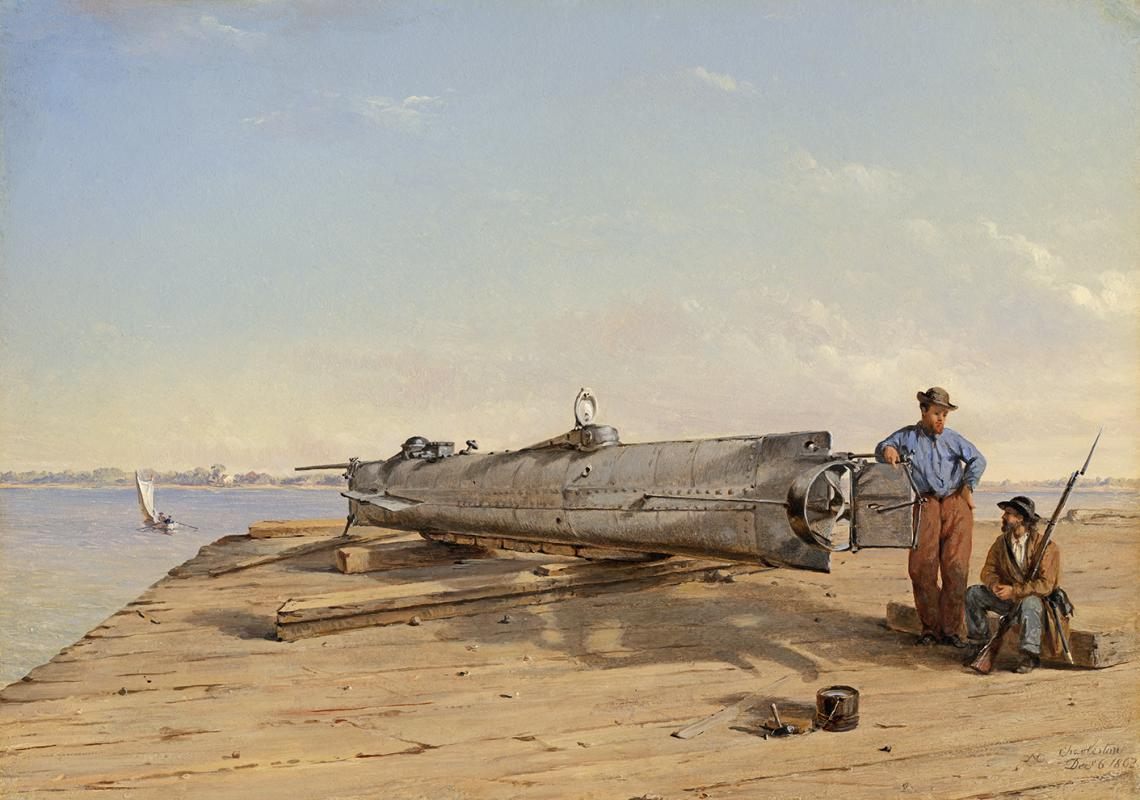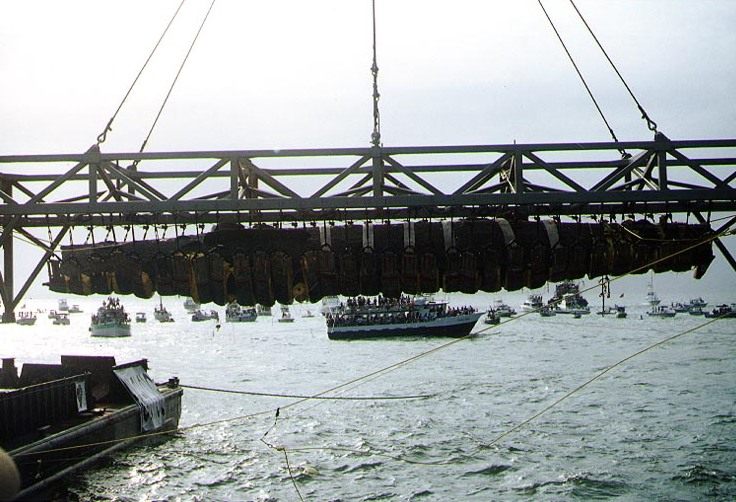Scientists Decode the Wreck of H.L. Hunley
Solving the century-old mystery of what killed the Confederate submarine’s crew.

The crew of the Confederate combat submarine H.L. Hunley often referred to it as the “porpoise,” for its ability to dive down into the waves and then rise back up to the surface. And this it did, but not always in the way it was intended. It sank three times (and was recovered twice)—on August 29, 1863, killing five crew members; on October 15, 1863, killing all eight, and then, finally, on February 17, 1864, after making history. After sinking USS Housatonic in Charleston Harbor—the first submarine to actually take out an enemy vessel—the craft slipped beneath the surface for the last time. All eight of her third crew perished again, and the ground-breaking submarine was lost.
Maritime and military historians have long been perplexed by what actually caused those casualties. Researchers at Duke University now believe they may have a solution. When the submarine was finally raised from the seabed in 2000, five years after it was found, the remains of all eight crew members remained eerily at their stations. This was a clue. The crew were likely killed instantly, by the blast from the submarine’s own spar torpedo, Rachel Lance, a graduate student in biomechanics, said. “The pressure wave from the explosion was transmitted into the submarine,” she told Nature. “It was sufficiently large that the crew were killed.” The researchers came to their conclusion after blowing up a scale model of the submarine in a pond and measuring the forces—providing data to back up a long-held suspicion.
Nearly 40 feet long and made of high-tensile boiler iron, Hunley was a sophisticated piece of 19th-century nautical engineering. Hand cranks powered the craft, while a 22-foot pole mounted on the bow supported its only weapon, a single copper cylinder (“about the size of a beer keg,” said Lance), filled with gunpowder. In 2013, researchers realized the submarine was still attached to its explosive charge. The torpedo, it appeared, had not been designed to be detached from the submarine but rather to be plunged into the side of an enemy craft. So, when it worked as intended, a significant explosion rocked the water in close proximity to the crew.

Lance estimates that the crew had a 16 percent chance of survival, based on the lung trauma the explosion probably would have inflicted. But Robert Salzar, a blast injury expert from the University of Virginia, said that they might not have died right away, but succumbed to the water and trauma after being knocked unconscious by the blast. Only the wreck and those skeletons, in position for well over a century, are left to tell the tale.














Follow us on Twitter to get the latest on the world's hidden wonders.
Like us on Facebook to get the latest on the world's hidden wonders.
Follow us on Twitter Like us on Facebook